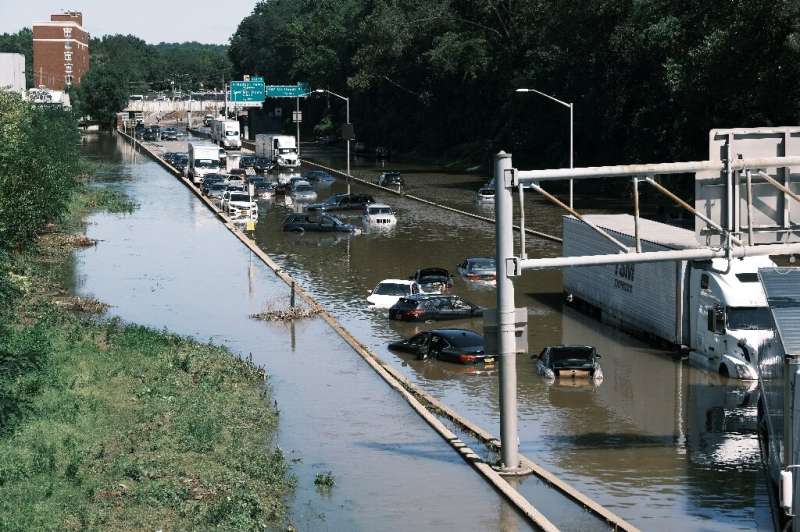The contiguous United States experienced 688 natural disaster-related fatalities in 2021—the most since 2011, said a federal weather agency report on Monday.Spencer Platt/Getty Images/AFP.
Nearly 700 people died due to natural disasters in the contiguous United States in 2021—the most since 2011, said a federal weather agency in a report released Monday.
The year "was marked by extremes across the US, including exceptional warmth, devastating severe weather and the second-highest number of billion-dollar weather and climate disasters on record," said the National Oceanic and Atmospheric Administration (NOAA).
The death toll for weather-related disasters in the 48 mainland states plus the District of Columbia totaled 688, more than twice 2020's tally of 262, the agency said.
Human activity has caused life-threatening climate change resulting in more severe weather events across the globe.
Twenty separate weather incidents cost the country $1 billion or more, the second-most billion-dollar events recorded in a calendar year behind 2020, which saw 22, the agency said.
The costly disasters included four hurricanes, three tornados, two floods, a cold wave, and western wildfires, droughts, and heat waves.
Rachel Cleetus, policy director and lead economist for the Climate and Energy Program at the Union of Concerned Scientists, called the statistics "sobering."
"The devastating toll and trauma imposed by extreme weather and climate disasters have, and continue to, hit some people harder than others with communities of color, low-income communities, and communities that have endured multiple disasters often bearing the brunt of its impacts," she said.
A bitter cold snap left millions of Americans without electricity in February, when a deadly winter storm system held its grip across huge swathes of the United States, even pushing as far south as Mexico.
Record-low temperatures wracked places ill-prepared for such conditions, overwhelming local utility companies and infuriating residents left to huddle under coats and blankets and fend for themselves. More than 20 storm-related deaths were registered.
Hurricane Ida struck the US Gulf Coast as a Category 4 hurricane in late August, bringing major flooding and knocking out power to large parts of the heavily populated region.
The final blast of the storm killed at least 47 people in the US Northeast as it turned streets into raging rivers, inundated basements and shut down the New York subway.
NOAA reported that 2021 ranked as the fourth-warmest year in a 127-year period of record, with average temperatures of 54.5 degrees Fahrenheit (12.5 degrees Celsius) in the contiguous US.
December 2021 was the warmest on record—6.7F above average.
The 2021 average temperature was 2.5F higher than the 20th century average.
US northeastern states Maine and New Hampshire had their second-warmest year on record, and 19 more experienced a top-five warmest year.
Alaska, however, saw a 0.4 degree drop in average yearly temperature and its coldest year since 2012.
© 2022 AFP
























